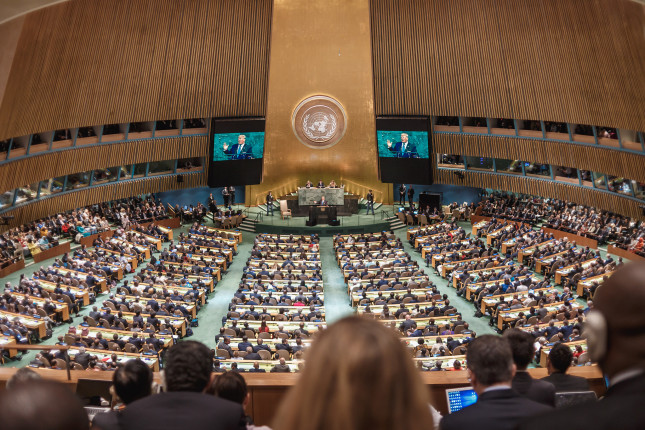-
Geoengineering and Notions of Sovereignty: A Wilson Center NOW Interview with Beth Chalecki
May 26, 2021 By Ratia Tekenet
As climate change impacts become starker, interest in geoengineering is growing. Geoengineering is “climate manipulation technologies that we can use to alter the climate to offset the worst parts of climate change,” says Beth Chalecki, Associate Professor of International Relations at the University of Nebraska Omaha, and Research Fellow at the Wilson Center, in a recent episode of Wilson NOW. “It sounds like a technological fix, but of course it’s not that simple,” says Chalecki.
Global efforts to cut greenhouse gas emissions through mitigation or adaptation strategies are lagging. Right now, the planet is headed towards a 3-4o C warming by 2080, says Chalecki. This will affect security in all kinds of ways, which is why geoengineering could become an attractive option for governments.
Two leading geoengineering technologies include solar radiation management and carbon dioxide removal. Solar radiation management (SRM) is bouncing sunlight back out of the atmosphere before it reaches the ground. Carbon dioxide removal processes involve sucking greenhouse gases directly out of the atmosphere and sequestering them. Each technology comes with substantial questions of feasibility. “Solar radiation management is fast, cheap, and dangerous; and carbon dioxide removal is slow, safe, and effective. But we don’t know how much time we have, so the fast option is going to look more attractive,” says Chalecki.
There are risks, both known and unknown, associated with SRM, however. For example, says Chalecki, if in the deployment of SRM we don’t use the time that we’re giving ourselves to mitigate emissions, if and when the SRM project ends, there will be a build-up of greenhouse gases and an associated “termination shock”—a sudden spike in temperature that outpaces our ability to adapt.
While there is growing research on geoengineering, until now, we have not yet addressed the international relations and security aspects of these technologies. When sovereignty is critical but security concerns are transboundary, the United Nations provides a model for global cooperation, says Chalecki. “This is the only place where planet-altering technologies… are going to be vetted and be allowed to be aired out by the entire international community.”
“My concern, is that by letting each nation pursue geoengineering individually, we might very well end up with a ‘climate arms race,’” says Chalecki. We have to consider whether or not we cling to this idea of territorial sovereignty—the idea that sovereign states are indivisible and separate. In most areas of international law sovereignty serves us fine, but not in the environment, says Chalecki. There’s no such thing as an environmentally sovereign nation, she says. The whole planet is connected ecologically. “If we can recognize that, we may be able to seed some sovereignty to this international organization with regard to this particular technology.”
Photo Credit: President Trump addresses the United Nations General Assembly in New York on September 19, 2017, courtesy of John Gillespie via Flickr/GPA Photo Archive.
 A Publication of the Stimson Center.
A Publication of the Stimson Center.






